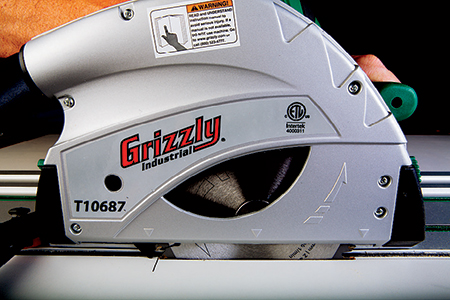
About six years ago, Bill Croffut got a call from the president of Grizzly Tools. The president was concerned about the quality of the tools they were making and, while Bill was doing some quality control from his office in Pennsylvania, the company’s new commitment to quality needed more hands-on involvement.
So Bill moved to Washington, where Grizzly is headquartered, and embarked on a long-range plan to improve the quality of the tools. He helped form a whole new quality control department and, about two years ago, started implemented strict quality standards in the company’s Taiwan factories. His group now includes no less than nine quality control engineers in the Taiwan operation and these guys are involved in every aspect of the production. “They don’t wait until the machine is built and ready to ship and open up boxes,” says Bill. “They go while the product is being assembled and check on the assembly line for any problems.”
And the effort has paid off. In the past, says Bill, the company was primarily concerned with the function of the tools, i.e. did they work up to consumers’ expectations. Now function is a given and he and his crews are going to the next step: fit and finish. That means every aspect of the tool is now up to Bill’s quality standards, from the bearings to the paint job.
Now when you look at a Grizzly table saw, he says, it looks very different than it did five years ago. Even from a distance, you can see that an attention to detail is built in.
So why this devotion to quality? It was a simple case of responding to customers. Customers wanted higher quality and more accurate tools and Grizzly saw an opportunity. “Consumers want higher and higher quality,” says Bill, “and they’re not necessarily willing to pay for it. That put us at a distinct advantage in the marketplace.” The company already had the kinds of prices woodworkers preferred; it just had to improve the quality, keep the prices stable and it would win market share. At first glance, improving quality looked expensive, but it really ended up being a wash, says Bill. Waste reduction, production efficiencies, decreased reject ratios, and increased sales and customer satisfaction would more than offset the cost.
Bill started proving his mechanical proficiency when he was just 8 years old. His dad, a consummate handyman, was having trouble getting a rototiller started. So when dad was at work one day, young Bill removed the engine from the contraption and proceeded to completely disassemble it on the back porch. He even got the valves off. “When my dad came home and saw it, the first thing he said was ‘how did you do that?'” said Bill. Instead of being angry with his son (even though they never got it back together), Bill’s father thought the whole thing was funny. Years later, when Bill was in his twenties, he went to work for his father. That’s when he discovered everyone at the factory already knew the story. Fathers will talk.
Before coming to Grizzly nine years ago, Bill did a stint with his father, owned his own motorcycle dealership, worked on race cars and high-performance engines for boats and even was an instructor for the Federal government in industrial and marine technologies.
Of course, working for Grizzly has given him the opportunity to outfit his woodworking shop with every tool imaginable, and it’s a good thing, too. You see, Bill is currently working on a big project. While some us are laboring long and hard making entertainment centers and dining room tables, Bill is making an airplane. That’s right, he is building a four-passenger airplane out of stika spruce and aircraft plywood.
The whole shebang is handmade, down to the brackets and gas tanks, except for the GMC V-6 engine that will power the aircraft. Almost all of it is wood and the stika spruce, though expensive, is particularly fun to work with. “When that thing takes off, it will certainly turn heads,” says Bill.
He figures the plane will take about 6,000 hours of work before it’s done. He’s currently about 1,000 hours into it and has the tail and most of the inner working for the wings completed. When various pieces are done, he hangs them from the ceiling of his 24’x36’ shop to keep them out of trouble. “I’ll tell you what,” says Bill, “it has improved my woodworking skills beyond anything I had done before. The accuracies are so demanding. If you need to cut a piece at 11degrees , it has to be 11degrees. Everything has to be perfect.”
Bill’s attention to detail is also paying off for Grizzly, which couldn’t ask for a more meticulous quality control guy!
– Bob Filipczak







